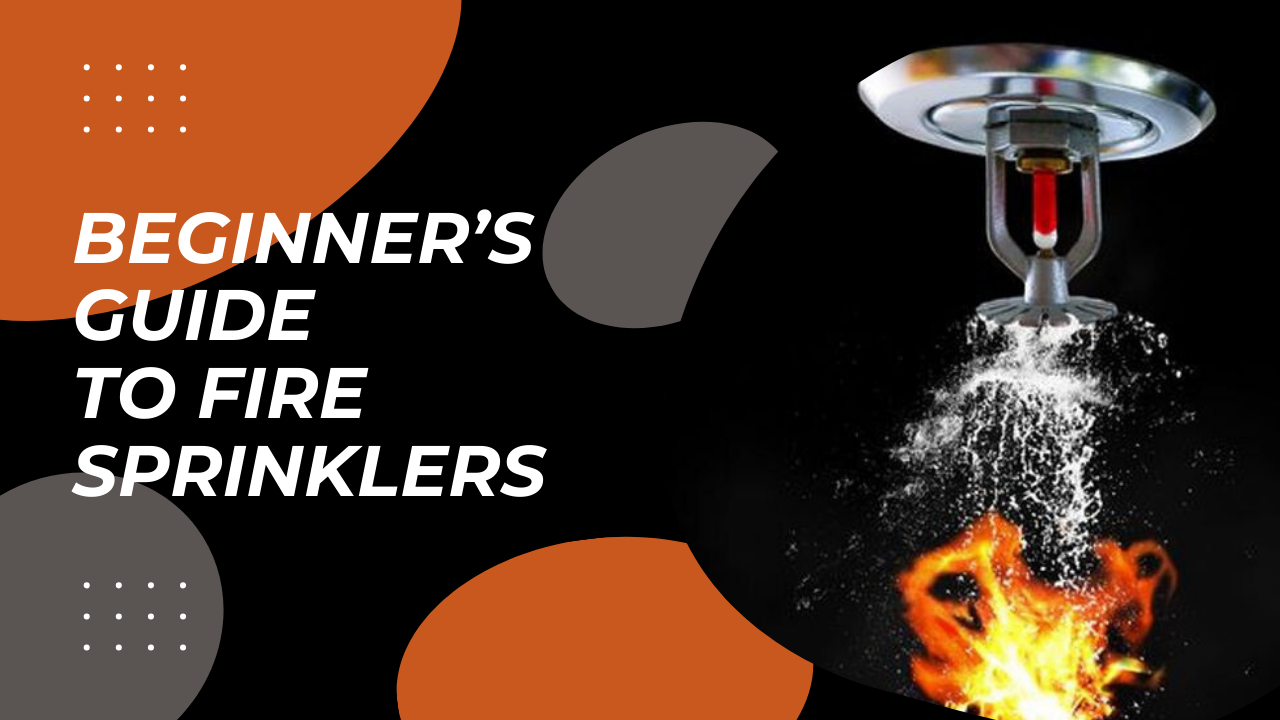The importance of fire sprinklers has been acknowledged since the 19th Century when it was first manufactured. A Fire sprinkler is a firefighting system set up to automatically activate itself and extinguish fire breakouts. Interestingly, unlike the popular mental picture painted by movies, a fire sprinkler does not go off easily or arbitrarily. It is not activated by smoke, but can only detect fire after high room temperature pops its bulbs
Fire sprinklers are essential components needed in every domestic and commercial buildings. They are often installed in ceilings or side walls. This automatic firefighting systems is made up of a network of pipes, water supply and a sprinkler head. The pipes are normally kept pressurized as fire pump aids water supply from source into the pipes. This causes a forceful flow out of water that could extinguish any fire.
Fire Sprinkler Benefits
- Control Potential Fire Spread
Unlike smoke alarms, fire sprinklers do not only alert you of possible fire outbreak but help control the potential spread of fire
- Damage Control
The damage control role fire sprinklers play is unquantifiable. They forestall destruction of the building’s structural integrity and, consequently, prevent loss of invaluable resources.
- Environmental Effect
Typically, smokes from fire outbreaks cause lots of atmospheric hazard and toxicity. By extinguishing the fire, sprinklers help to protect environmental health.
- Buy you Invaluable Time to Escape
Statistically, in less than 5-minute, an entire building could be engulfed in fire. Sprinklers buy enough time for people to escape as it curtails fire outbreak.
- Assist Firefighters
Fire Sprinklers help reduce the work of firefighters and make fire scenes easier for firefighters to navigate.
- Life-Saver
This is the most notable benefit of fire sprinklers. Worldwide, statistics only records 50 deaths from a house with fire sprinkler system. It has a 99% efficiency rating. Fire sprinklers are so effective that some countries have never recorded fire fatality cases from buildings where a sprinkler system is installed.
Types of Fire Sprinklers
- Wet pipe
In this type, the pipes pre-holds water and the sprinkler is activated when its element reaches certain designated temperature which causes break and release of water. Buildings with wet pipe are mandated to maintain, at least, a 40 degrees Fahrenheit temperature, to forestall freezing of pipe water.
- Dry pipe
In this type, the pipes hold pressurized air or nitrogen as against water. When the sprinkler detects sudden temperature rise, the valve opens and floods in water into the pipe. Dry pipes are better options in areas susceptible to freezing temperature.
- Pre-action
Like dry pipe, Pre-action fire sprinklers contains nitrogen or pressurized air. However, they utilize two-step activation to forestall accidental water discharge. A connected smoke or heat detector first signals possible fire outbreak, then, the vales open, fill up water into the system and next, the water is only release, subject to the sprinkler head detecting temperature rise.
- Deluge
Deluge pipes contains neither water nor pressurized air. But, unlike the others, their sprinkler is constantly open and when smoke or heat is detected, the valve immediately opens and pushes water into the sprinkler. Deluge has the fastest water discharge potential and are often used in high hazard facilities like industrial plants, etc.
Where Fire Sprinklers are Most Needed
Comprehensively, all buildings are encouraged to install a sprinkler system. However, by nature of structure and use, some buildings are naturally more susceptible to fire occurrence and graver consequences. The four types of buildings where Fire sprinklers must be installed are, therefore, listed below.
- High-Rise Buildings
In many countries, all buildings, 11 metres and above, are mandated to have fire sprinklers installed. This is part of the modern high-rise building safety laws.
- Commercial Premises
Statistically, over half of commercial premises that suffer fire outbreak never actually reopens. Considering the 99% efficiency of Fire sprinklers, it becomes imperative for all commercial premises to have a functioning sprinkler system to forestall financial loss and abrupt business closer due to fire outbreak.
- Schools
Over 1,000 fire outbreaks occur yearly in school premises. As a result, to limit sudden school closure, the huge financial loss and potential life threatening implication to staff and students alike, it is paramount to install fire sprinkler system in every educational institutions.
- Care Homes
Hospitals and other care homes largely houses vulnerable people. Hence, in instances of fire outbreak, the casualties are often higher in care homes. Fire sprinklers, in controlling fire, help buy enough time to evacuate the vulnerable and therefore must be installed in every care home as a proactive measure.
